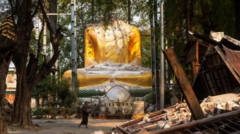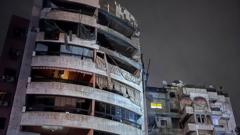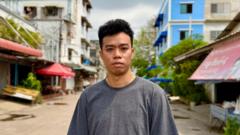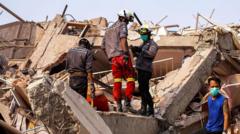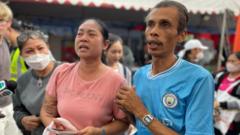The recent earthquake that struck central Myanmar has left a tragic toll, with reported deaths exceeding 1,600. As rescue operations surge to life, the backdrop of a nation plagued by civil war complicates efforts to save survivors.
Myanmar's Earthquake Devastation: Over 1,600 Lives Lost as Rescue Efforts Intensify

Myanmar's Earthquake Devastation: Over 1,600 Lives Lost as Rescue Efforts Intensify
Aid workers face monumental challenges in delivering relief to Myanmar's earthquake-stricken regions amid ongoing civil unrest.
Rescue teams are scrambling through the wreckage of collapsed structures in Mandalay, the country's second-largest city, where the tremors devastated homes, schools, and places of worship. The quake, occurring on a Friday, caught many off guard, and amid the chaos, families are desperate for information about MIA loved ones. Volunteer workers with limited resources are doing all they can; however, the military government’s tight grip on information limits their operations.
Thaw Zin, a local volunteer, stated the gravity of the situation, “There are at least a hundred people still trapped inside,” while pointing to the remains of the Sky Villa Condominium. This tragedy emphasizes the fragile state of governance within Myanmar. The military junta, which diverted attention during ongoing civil turmoil, may now be facing its most significant test as aid agencies work to navigate roads damaged by the earthquake while overcoming sewer problems and distrust from the populace.
Modeling by the U.S. Geological Survey projects the death toll could soar to over 10,000. This disaster unfolds against a backdrop of humanitarian strife — nearly 20 million people were already lacking sufficient food and shelter before the quake struck. It raises urgent questions about whether the junta can maintain its authority amid growing resistance from various rebel groups who have mobilized against their rule.
Amid the rubble, the determination of rescue teams remains unwavering, symbolizing the resilience of the Myanmar people in the face of catastrophe. As the international community watches closely, the coming days will be critical for both recovery and political stability in the region.
Thaw Zin, a local volunteer, stated the gravity of the situation, “There are at least a hundred people still trapped inside,” while pointing to the remains of the Sky Villa Condominium. This tragedy emphasizes the fragile state of governance within Myanmar. The military junta, which diverted attention during ongoing civil turmoil, may now be facing its most significant test as aid agencies work to navigate roads damaged by the earthquake while overcoming sewer problems and distrust from the populace.
Modeling by the U.S. Geological Survey projects the death toll could soar to over 10,000. This disaster unfolds against a backdrop of humanitarian strife — nearly 20 million people were already lacking sufficient food and shelter before the quake struck. It raises urgent questions about whether the junta can maintain its authority amid growing resistance from various rebel groups who have mobilized against their rule.
Amid the rubble, the determination of rescue teams remains unwavering, symbolizing the resilience of the Myanmar people in the face of catastrophe. As the international community watches closely, the coming days will be critical for both recovery and political stability in the region.


